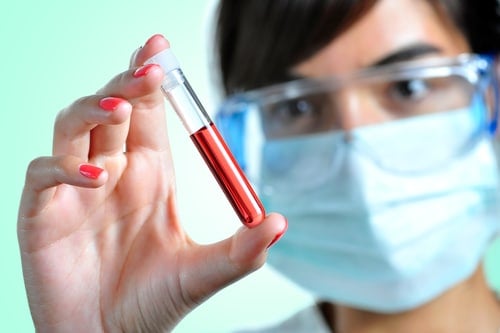Does Hyperuricemia Actually Cause Gout?
As a gout sufferer, you must’ve heard or read this big complicated word Hyperuricemia. Yeah I know, looks hard to pronounce, let alone know what it means. Don’t be intimidated, all hyperuricemia means is that it is a condition whereby a person has higher levels of uric acid in the blood. What is considered hyperuricemia is uric acid levels of over 8mg/dl in men and 7mg/dl in women while others say 7mg/dl in men and 6mg/dl in women.
What causes hyperuricemia is the deficiency of the hepatic enzyme called uricase causing the uric acid not be properly excreted from the kidneys. Did you know that 21% of the US population is affected with hyperuricemia? Many factors contribute to hyperuricemia, which may include: genetics, insulin resistance, hypertension, renal insufficiency, being over-weight, diet, and consuming alcohol. Diet alone generally is not sufficient to cause hyperuricemia.
Hyperuricemia increases the risk of someone developing not only gout but other diseases as well, like hypertension, cardiovascular and kidney disease, even bladder stones and type 2 diabetes. But do note that hyperuricemia is mostly associated with gout. Before you got your first gout attack, you were a hyperuricemic patient, without even knowing it of course. Another fact is that many people who suffer from hyperuricemia may never develop gout.
People with blood uric acid levels between 7 and 9mg/dl have a 0.5 to 3% chance of developing gout, rising to 4.5% increased risk of developing the disease with uric acid levels over 9mg/dl. You can check out this study for more information. I know what you are saying, why me? Although these people that are hyperuricemic and have never developed gout, ultrasound studies have shown that up to one-third may have urate deposits; and evidence of inflammation in their joints and soft tissues.
They can even have needle-like crystals lodge in their joints for years without causing any problems. What happens next is either they re-dissolve in body fluids and re-enter circulation or causes that person’s first gout attack and the development of this disease.
In mammals, purines are altered into intermediate uric acid which are removed by the breakdown in the liver and excreted from the kidneys. Then they are metabolized by the enzyme uricase into a compound called allantoin which is a soluble compound that can move very easily through the bloodstream and filtered out by the kidneys. The problem lies in us humans since we lack this uricase enzyme and we only break down purines into uric acid. There is a team of researchers that believe a future gout cure may lie in this enzyme and was featured in the news this past week.
The danger for the gout sufferer is that even during the periods in between gout attacks let’s say, where you don’t have any symptoms or feel any pain, your body is exposed to what they call periods of low-grade, chronic inflammation. What that says dear gout sufferer, is that you should take extra precautionary care of yourself. What that means is you definitely need to watch what you eat, although a purine-rich diet is a common but actually a minor cause of hyperuricemia, particularly red meat; watch your weight, don’t smoke, avoid alcohol, limit your sugar intake and exercise.
Speaking of sugar, in a study it was concluded that consuming four or more sugar-sweetened soft drinks per day gave an odds ratio of 1.82 to develop hyperuricemia. Genetics may also play a role in regards to your chances of developing hyperuricemia since those who had a hereditary predisposition toward hyperuricemia and of course gout. Watch that fructose! Finally, make sure to take regular blood tests and monitor your uric acid levels regularly.

